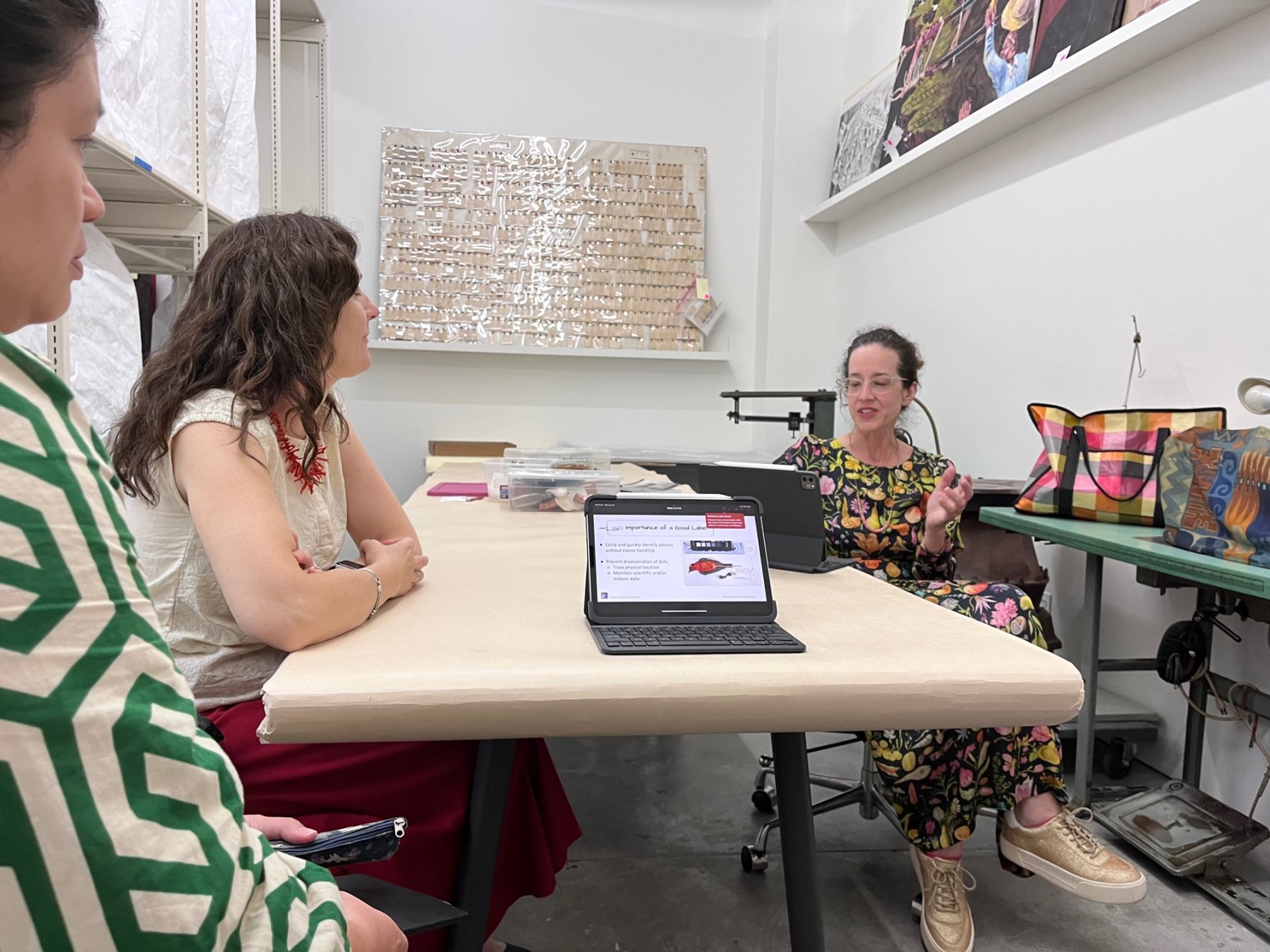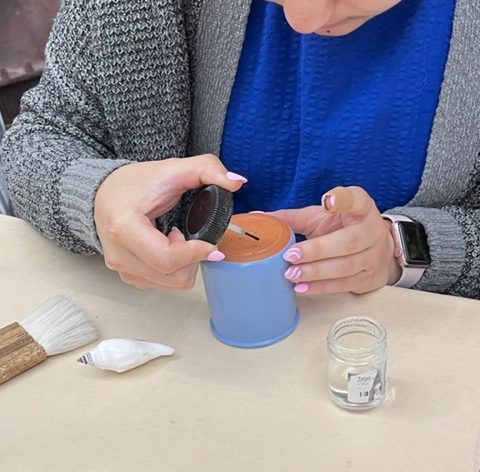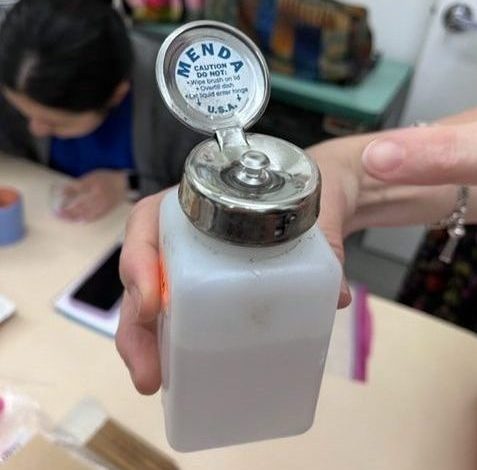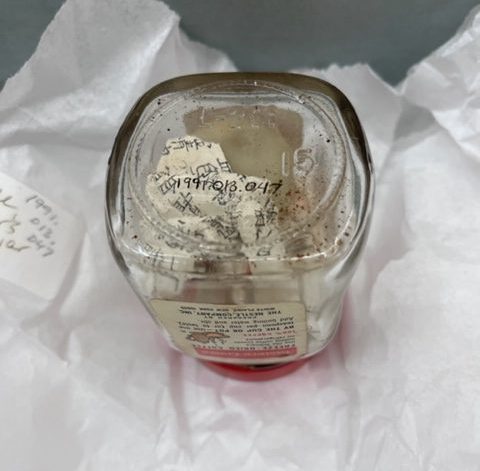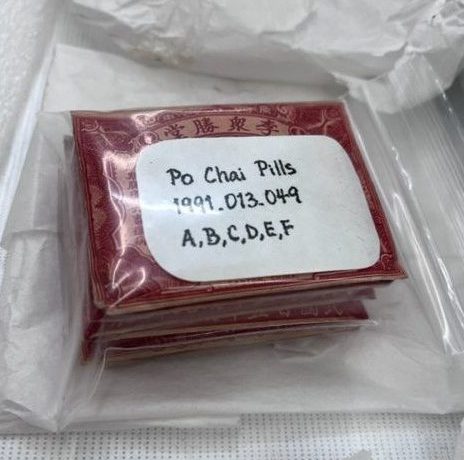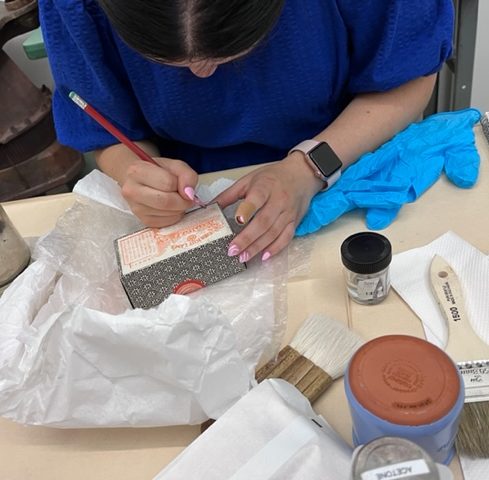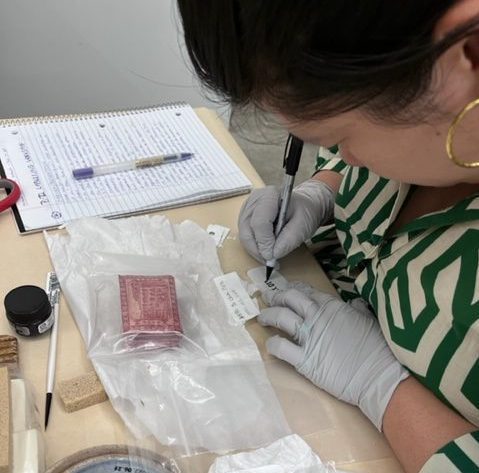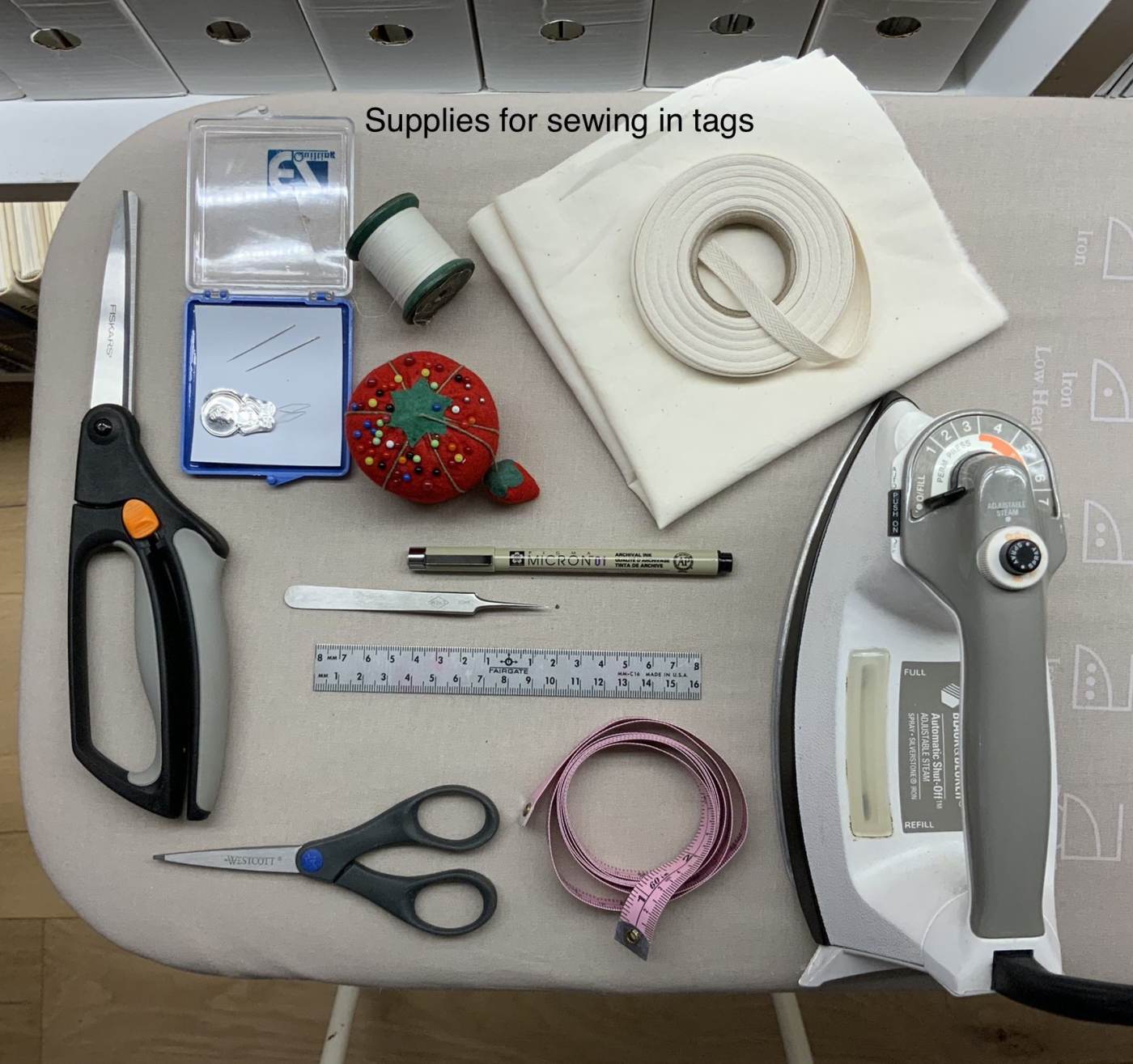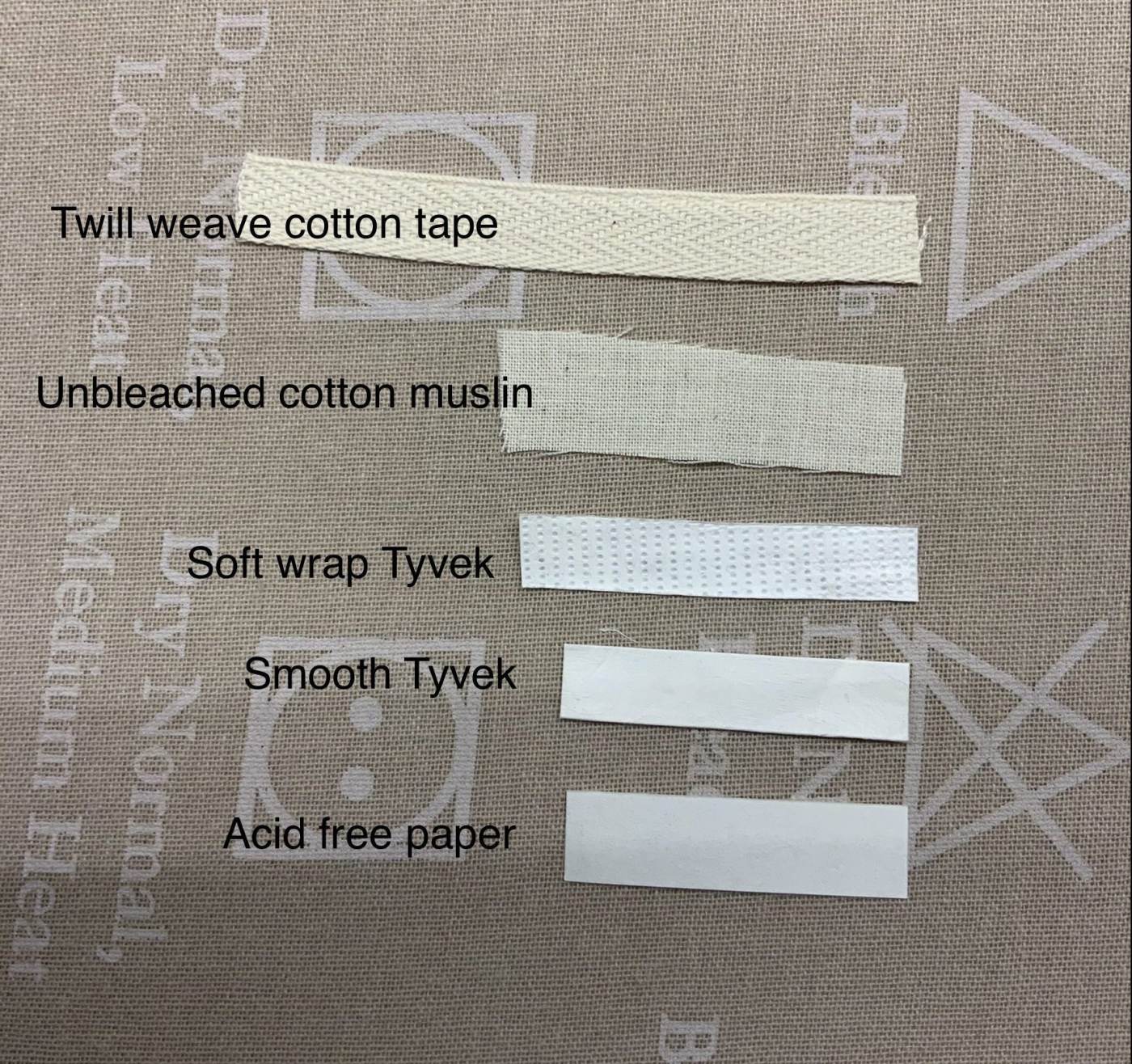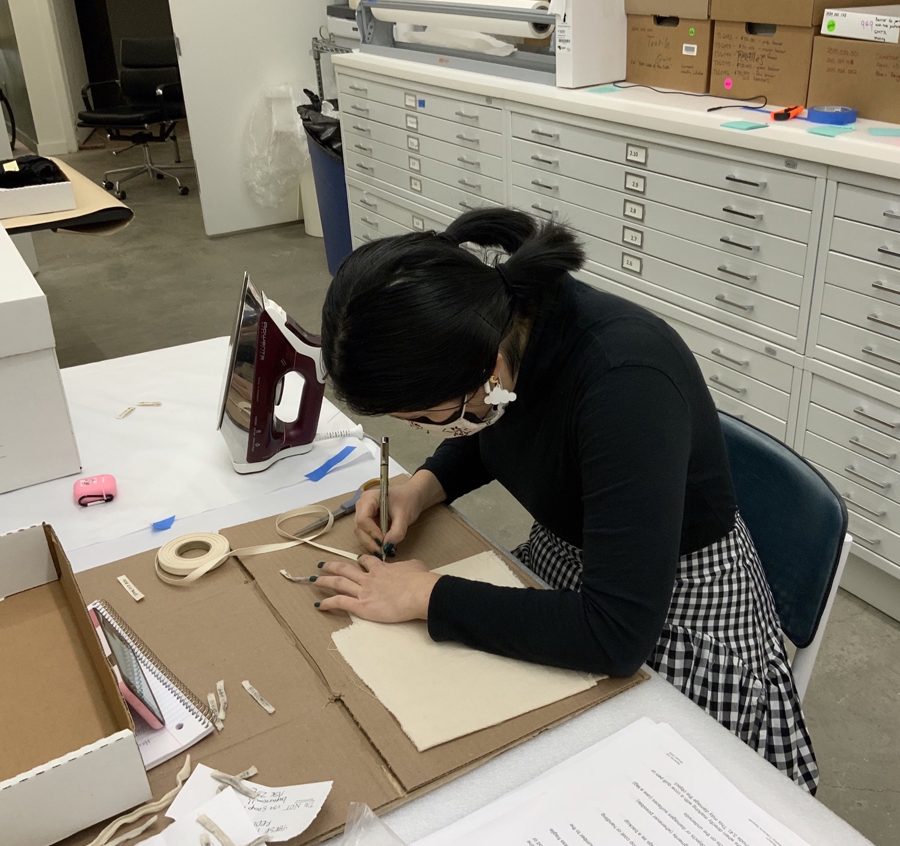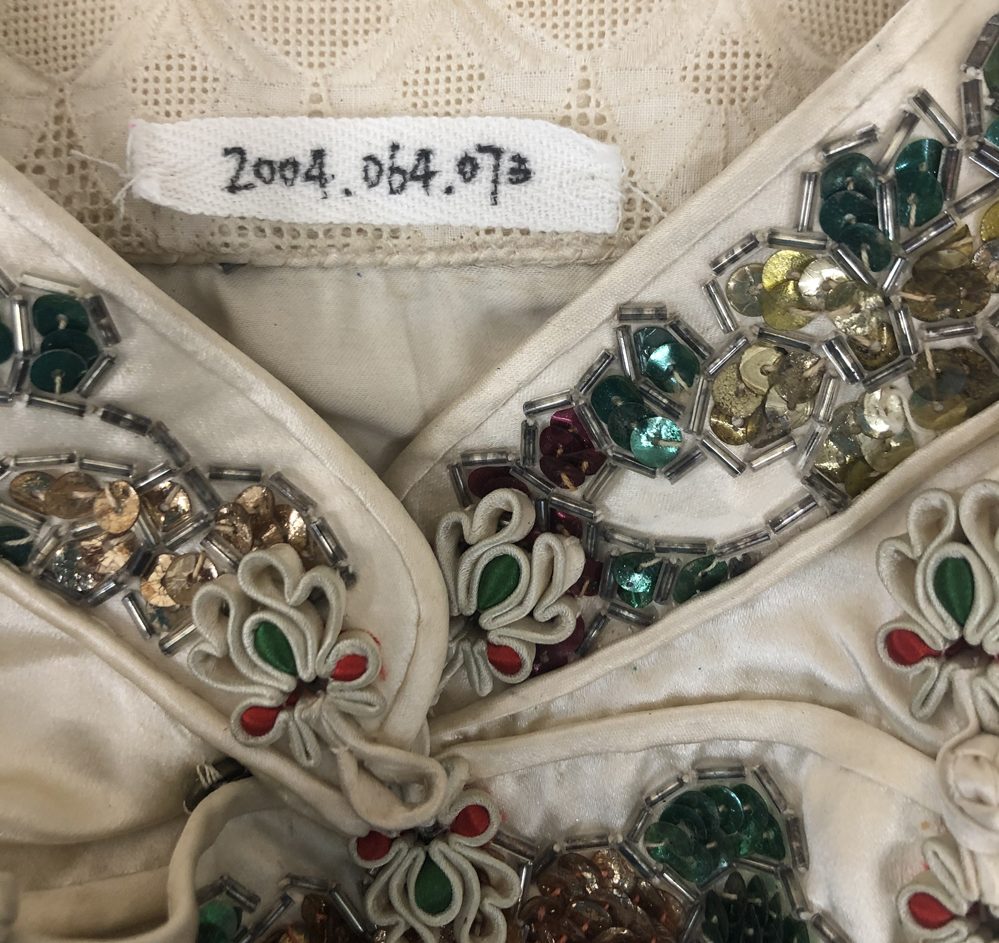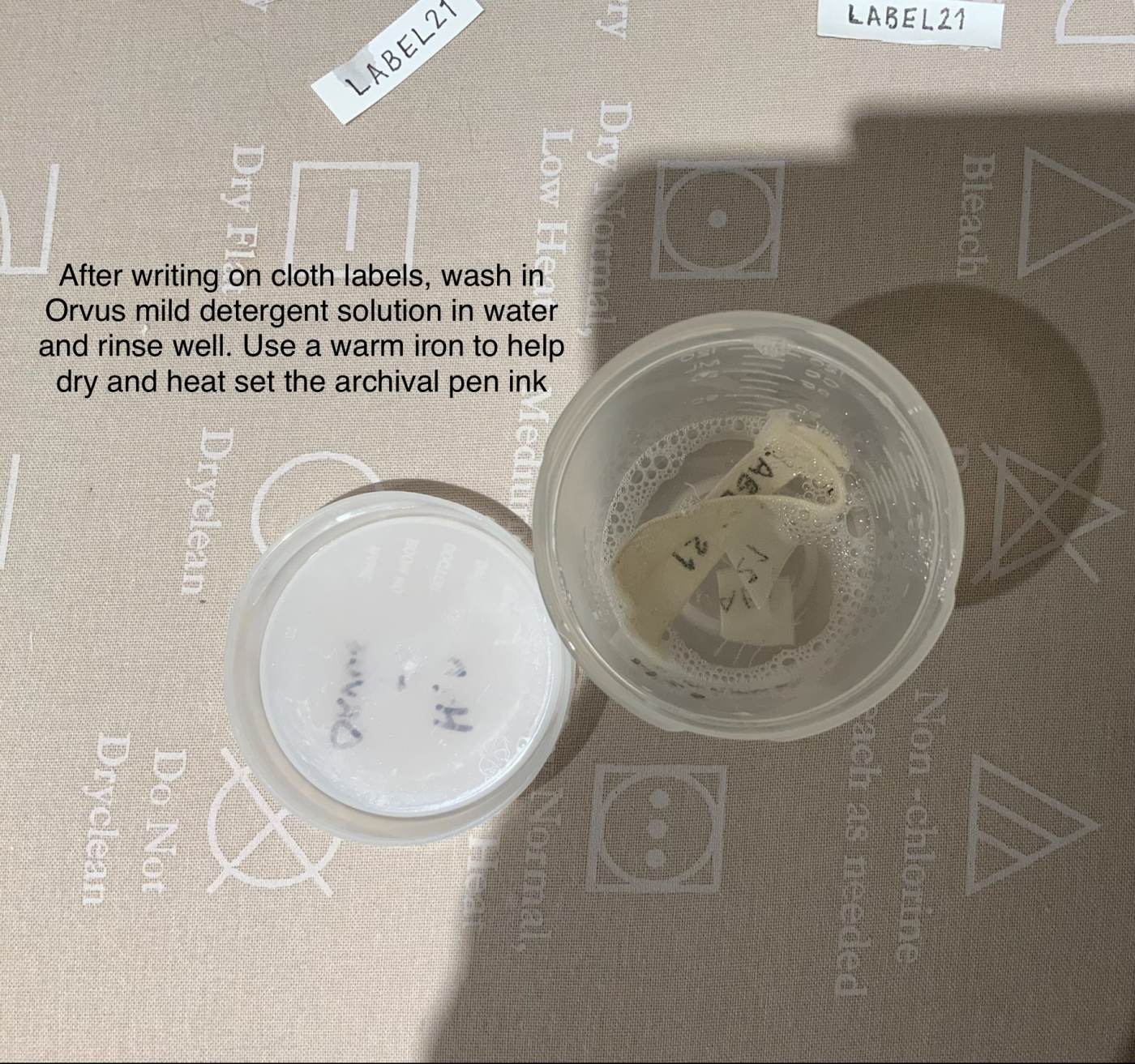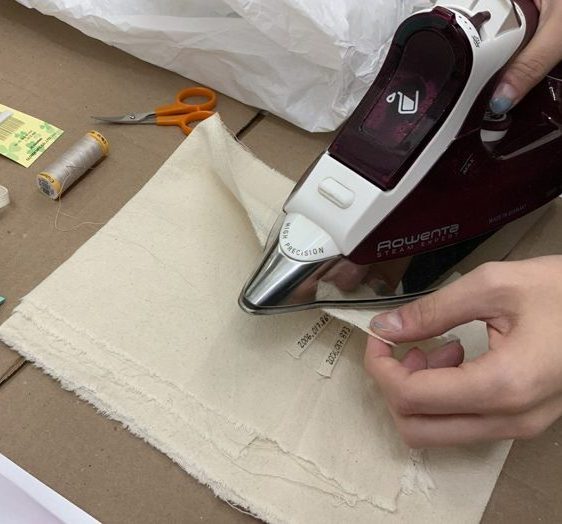For each object taken into the care of MOCA’s collections, MOCA staff record as much information as possible about its donor, provenance, use, and history. We then assign it a unique object number and storage location within the archive. Labeling each object with its unique object number allows us to easily identify that object within our vast collection of 85,000+ objects, as well as access all of the contextual and location information recorded about it. The object number is usually marked directly on the object so that it cannot become separated from its documentation.
This past July, object conservators at A.M. Art Conservation Anne Léculier King and Eugenie Milroy conducted a hands-on workshop with MOCA Collections staff to review best practices and most appropriate methods for labeling museum objects made of wood, glass, metal, paper, various textiles, and other materials. The particular method chosen in each instance needs to be legible, durable, non-damaging, and removable.
Below are some photos and lessons we learned from our workshop.
3D Objects:
